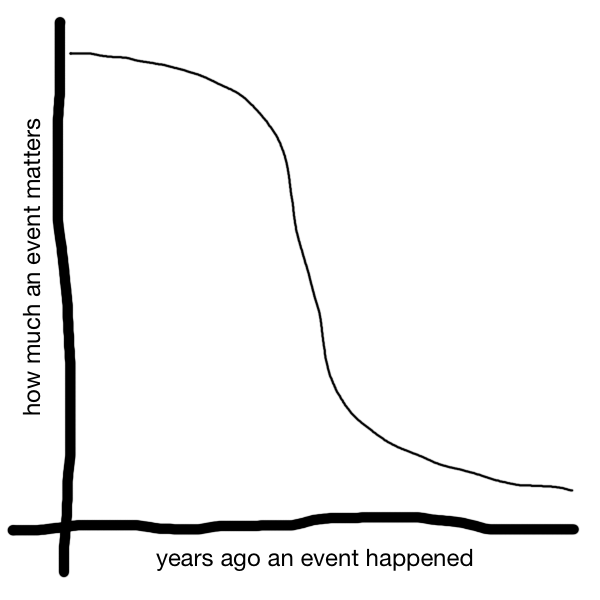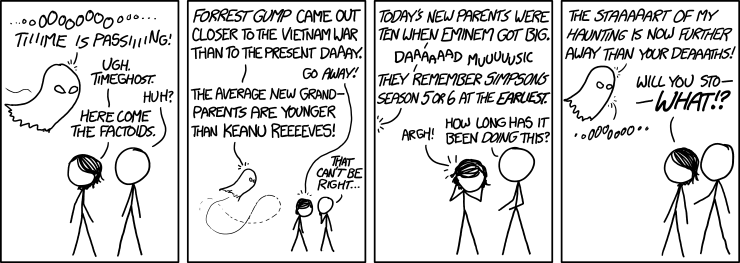Homeschooling While Working From Home During a Global Pandemic Bingo
This is a repost promoting content originally published elsewhere. See more things Dan's reposted.
This is a repost promoting content originally published elsewhere. See more things Dan's reposted.
This is a repost promoting content originally published elsewhere. See more things Dan's reposted.
The season’s final episode of Two of These People are Lying ends with a brilliant and unintentional twist.
This is a repost promoting content originally published elsewhere. See more things Dan's reposted.
Love this video: the Dutch PM reminds everybody not to shake hands with one another… then turns and shakes somebody’s hand. Then realises his mistake and initiates even more bodily contact by way of apology.
This is a repost promoting content originally published elsewhere. See more things Dan's reposted.
…
A guy walks into a bar. It’s a low one, so he gets a raise within his first six months on the job.
Did you hear the one about the woman who reported sexual harassment? Of course you didn’t; she was forced to sign an NDA.
…
Louise Bernikow once wrote: Humour tells you where the trouble is.
It’s okay to laugh at these jokes. But only so long as you do so with an awareness that their comedy comes from the nuggets of truth within each and every one of them. Our society’s come a long way this last century, but we’ve still got a long way to go.
This is a repost promoting content originally published elsewhere. See more things Dan's reposted.
The story of the first two episodes of The Mandalorian, told to the tune of Big Iron. With thanks to JTA for sharing with me.
This is a repost promoting content originally published elsewhere. See more things Dan's reposted.
Ashley’s back! (Do Brian and Nick know any girls’ names that aren’t Ashley?)
But more-importantly, there’s a new BriTANicK, which is a rare enough treat these days that I feel the need to share it with you.
This is a repost promoting content originally published elsewhere. See more things Dan's reposted.
I told this story to a few guildies a while back and decided to archive it in a longer format; so here is the story of The Great Flamingo Uprising of 2010 as told to me by my favorite cousin who was a keeper at the time.
In addition to the aviary/jungle exhibit, our zoo has several species of birds that pretty much have the run of the place. They started with a small flock of flamingos and some free-range peacocks that I’m almost certain came from my old piano teacher’s farm. She preferred them to chickens. At some point in time they also acquired a pair of white swans (“hellbirds”) and some ornamental asian duckies to decorate the pond next to the picnic area. Pigeons, crows, assorted ducks and a large number of opportunistic Canada geese moved in on their own.
…
I lost it at the bit where the koi blooped again.
Morals: geese are evil, swans are eviler, flamingos and peacocks are weird as fuck, and this story’s hilarious.
This is a repost promoting content originally published elsewhere. See more things Dan's reposted.
I enjoyed many of these (I note that my colleagues at Automattic are behind a significant number of them).
I’m not yet at the point of needing emergency assistance for my distributed working habits, but I’ve definitely passed the pigeon stage…
This is a repost promoting content originally published elsewhere. See more things Dan's reposted.
…
Back in 2016, I made an iMessage app called Overreactions. Actually, the term “app” is probably generous: It’s a collection of static and animated silly faces you can goof around with in iMessage. Its “development” involved many PNGs but zero lines of code.
Just before the 2019 holidays, I received an email from Apple notifying me that the app “does not follow one or more of the App Store Review Guidelines.” I signed in to Apple’s Resource Center, where it elaborated that the app had gone too long without an update. There were no greater specifics, no broken rules or deprecated dependencies, they just wanted some sort of update to prove that it was still being maintained or they’d pull the app from the store in December.
Here’s what it took to keep that project up and running…
…
There’s always a fresh argument about Web vs. native (alongside all the rehashed ones, of course). But here’s one you might not have heard before: nobody ever wrote a Web page that met all the open standards only to be told that they had to re-compile it a few years later for no reason other than that the browser manufacturers wanted to check that the author was still alive.
But that’s basically what happened here. The author of an app which had been (and still did) work fine was required to re-install the development environment and toolchain, recompile, and re-submit a functionally-identical version of their app (which every user of the app then had to re-download along with their other updates)… just because Apple think that an app shouldn’t ever go more than 3 years between updates.
This is a repost promoting content originally published elsewhere. See more things Dan's reposted.
In 1953, upon Elizabeth II’s ascent to the throne, a dish was created to mark the event: coronation chicken.
Today, to mark the UK’s exit from the EU, I propose a new dish: chlorination chicken.
I’d laugh if I weren’t so sad.
This is a repost promoting content originally published elsewhere. See more things Dan's reposted.
I’m not sure that I’m physically fit enough for this “sport”, but I’d totally give it a go. If only to troll the BMX and skate kids at the local skate park…
This is a repost promoting content originally published elsewhere. See more things Dan's reposted.
Ah, scissors. They’re important enough that we have an emoji for them. On your device, it appears as ✂️. Unlike the real world tool it represents, the emoji’s job is to convey the idea, especially at small sizes. It doesn’t need to be able to swing or cut things. Nevertheless, let’s judge them on that irrelevant criterion.
…
I’ve watched from afar as the Internet collapsed in on itself during a debate about what a cheeseburger looks like and I’ve raged a little myself at the popular depiction of juggling, but this newly-identified emoji failure is a whole new thing. Sure, emoji are supposed to be representative, not realistic. But if they have to cover sufficient diversity to include gender-neutral representations (which they absolutely should, and should have done in an early instance, but at least we’re fixing some of the issues in hindsight, like Ido did) then perhaps they could also include sufficient attention to detail that the tools they depict would actually, y’know, work?
This is a repost promoting content originally published elsewhere. See more things Dan's reposted.
…
West Germany’s 1974 World Cup victory happened closer to the first World Cup in 1930 than to today.
The Wonder Years aired from 1988 and 1993 and depicted the years between 1968 and 1973. When I watched the show, it felt like it was set in a time long ago. If a new Wonder Years premiered today, it would cover the years between 2000 and 2005.
Also, remember when Jurassic Park, The Lion King, and Forrest Gump came out in theaters? Closer to the moon landing than today.
…
These things come around now and again, but I’m not sure of the universal validity of observing that a memorable event is now closer to another memorable event than it is to the present day. I don’t think that the relevance of events is as linear as that. Instead, perhaps, it looks something like this:

Where the drop-off in relevance occurs is hard to pinpoint and it probably varies a lot by the type of event that’s being remembered: nobody seems to care about what damn terrible thing Trump did last month or the month before when there’s some new terrible thing he did just this morning, for example (I haven’t looked at the news yet this morning, but honestly whenever you read this post he’ll probably have done something awful).
Nonetheless, this post on Wait But Why was a fun distraction, even if it’s been done before. Maybe the last time it happened was so long ago it’s irrelevant now?

This is a repost promoting content originally published elsewhere. See more things Dan's reposted.
Uploaded to YouTube 11 years ago, in what now feels like an earlier era, this old classic still makes me smile every time.